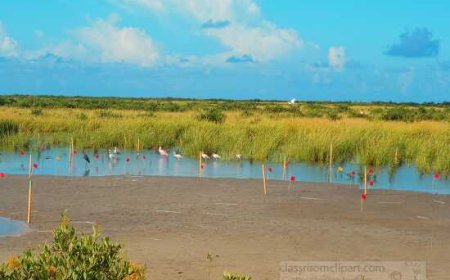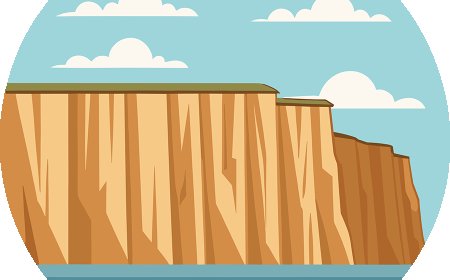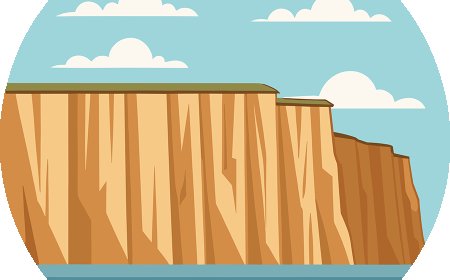Tropical Rainforests for Kids: Fun Facts, Layers, and Why They Matter
Explore tropical rainforests in this kid-friendly guide. Learn about their layers, animals, and why they are important to the plan

🌳🌧️ Tropical Rainforests: The Lungs of Our Planet
🌼 Introduction
Tropical rainforests are lush, green places full of life. They are home to more kinds of plants and animals than any other habitat on Earth. Tropical rainforests help make the air we breathe, control the climate, and provide food, medicine, and resources for people all around the world.
In this article, you’ll learn what tropical rainforests are, where they’re found, why they matter, and what we can do to protect them.
🧬 What Is a Tropical Rainforest?
A tropical rainforest is a warm, wet forest found near the Equator.
Main Features:
- Hot temperatures (usually 68–93°F or 20–34°C) all year long.
- Heavy rainfall, often over 80 inches (200 cm) per year.
- Dense plant growth with towering trees and thick canopies.
Tropical rainforests have existed for millions of years, making them some of the oldest ecosystems on Earth.
🌍 Where Are Tropical Rainforests Located?
Tropical rainforests grow in countries near the Equator, including:
- The Amazon Rainforest in South America (Brazil, Peru, Colombia)
- The Congo Basin in Africa (DR Congo, Cameroon)
- Southeast Asia (Indonesia, Malaysia)
- Central America (Costa Rica, Panama)
- Northern Australia and Papua New Guinea
The Amazon Rainforest is the largest, covering about 2.1 million square miles!
🌿 Layers of the Rainforest
Rainforests are made up of four layers, each with unique plants and animals:
- Emergent Layer
The tallest trees, reaching 200 feet (60 meters).
Home to eagles, bats, and butterflies. - Canopy Layer
Dense layer of leaves and branches.
Most animals live here, including monkeys, toucans, and sloths. - Understory Layer
Shady area beneath the canopy.
Jaguars, frogs, and insects live here. - Forest Floor
Dark and damp with very little sunlight.
Home to ants, termites, fungi, and decomposers.
🌱 Amazing Plants of the Rainforest
Rainforests are filled with incredible plants:
- Epiphytes (air plants) that grow on tree branches.
- Lianas (woody vines) that twist around trees.
- Orchids and bromeliads with bright flowers.
- Huge trees like kapok and mahogany.
Many plants have drip tips on their leaves so rainwater runs off quickly.
🐒 Animals of the Rainforest
Rainforests are home to more than half of all animal species on Earth. Examples include:
- Mammals: Jaguars, orangutans, sloths
- Birds: Macaws, toucans, harpy eagles
- Reptiles: Anacondas, chameleons, geckos
- Insects: Leafcutter ants, butterflies, beetles
- Amphibians: Poison dart frogs, tree frogs
Many animals use camouflage to blend in with plants.
🌦️ Why Are Rainforests Important?
- Produce 20% of the world’s oxygen.
- Absorb carbon dioxide to help slow climate change.
- Provide food, medicine, and resources.
- Protect soil and water supplies.
- Support local communities and indigenous peoples.
🛑 Threats to Tropical Rainforests
Rainforests are disappearing due to:
- Deforestation (clearing land for farms and logging).
- Mining and oil drilling.
- Fires set to clear land.
- Climate change.
Each year, millions of acres are lost.
🌱 How Can We Help?
- Use less paper and recycle.
- Buy products from companies that protect forests.
- Learn about rainforests and teach others.
- Support organizations that conserve rainforest land.
Every small action helps!
✨ Interesting Facts About Tropical Rainforests
- Over 2,000 plants from rainforests are used as medicines.
- A single tree can be home to 1,000 different species.
- The rainforest floor is almost completely dark.
- Some ants form living bridges with their bodies.
- The Amazon River is 2nd longest and runs through the Amazon Rainforest.
- Rainforests are called “jewels of the Earth.”
- New species are discovered every year.
📝 Kid-Friendly Summary
Tropical rainforests are warm, wet forests near the Equator. They are filled with amazing plants and animals, from tall trees to tiny insects. Rainforests help make clean air and control Earth’s climate. But many rainforests are being cut down. We can help by learning about them and taking care of nature.
🧠 Vocabulary Words
| Word | Definition |
|---|---|
| Canopy | The upper layer of trees that forms a roof over the forest. |
| Emergent Layer | The tallest trees that stick out above the canopy. |
| Understory | The layer of small trees and shrubs beneath the canopy. |
| Forest Floor | The ground layer of the rainforest. |
| Epiphyte | A plant that grows on another plant without harming it. |
| Deforestation | Cutting down forests to clear land or get wood. |
| Camouflage | Colors or shapes that help animals blend into their surroundings. |
| Biodiversity | The variety of plants and animals in an area. |
| Indigenous | People who have lived in a place for thousands of years. |
| Carbon Dioxide | A gas that plants use and humans breathe out. |
🎲 Interactive Quiz
Multiple Choice Questions
What is the tallest layer of the rainforest?
A) Canopy
B) Emergent Layer
C) Understory
D) Forest Floor
What do plants in the rainforest produce?
A) Oil
B) Carbon dioxide
C) Oxygen
D) Metal
What is deforestation?
A) Planting trees
B) Cutting down trees
C) Feeding animals
D) Cleaning rivers
Where are tropical rainforests usually found?
A) Near the Equator
B) Near the poles
C) In deserts
D) On mountains
What is an example of an epiphyte?
A) An ant
B) A jaguar
C) A vine
D) An orchid
True or False Questions
The Amazon Rainforest is the largest rainforest.
True / False
Rainforest animals all live on the forest floor.
True / False
Rainforests help control the Earth’s climate.
True / False
Many rainforest plants can be used for medicine.
True / False
Rainforests have four main layers.
True / False
Answer Key:
1–B, 2–C, 3–B, 4–A, 5–D, 6–True, 7–False, 8–True, 9–True, 10–True
🎨 Visual Aids Suggestions





















































